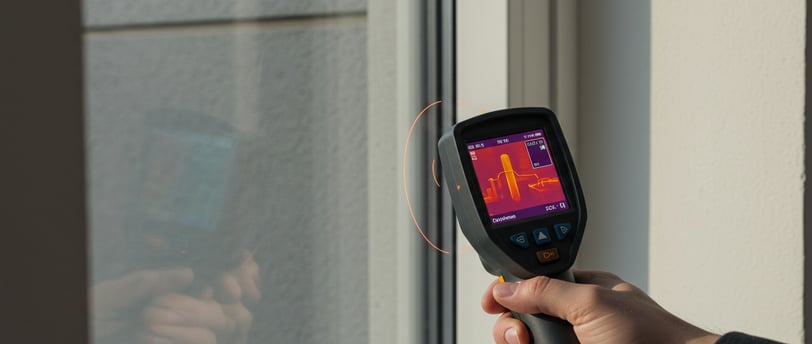Interpreting Thermal Imaging: Basics of Thermal Imaging Inspections and What They Reveal
Discover how thermal imaging works in home inspections. Learn how infrared cameras reveal hidden problems like moisture, energy loss, and electrical issues—before they become expensive repairs.
HOME INSPECTIONOLDER HOMESSELLING YOUR HOME
3/9/20252 min read


Thermal imaging is a special technology that helps us "see" heat. It uses infrared cameras to detect temperature differences in buildings and other structures. These cameras pick up heat radiation and turn it into images, showing us areas that are hot or cold. While we can’t see infrared radiation with our eyes, thermal cameras make it visible. This technology is useful in many fields, especially for checking buildings, saving energy, and finding hidden problems that can lead to damage or high bills.
Understanding thermal imaging can help homeowners, buyers, and professionals spot issues early. It plays a big role in energy audits, home inspections, and even environmental testing. With thermal imaging, you can detect air leaks, poor insulation, moisture problems, and even electrical risks—all without taking anything apart.
So, what exactly is thermal imaging? It works by detecting infrared radiation, which is a type of energy that everything gives off. The hotter something is, the more radiation it gives off. Thermal cameras capture this radiation and display it as a picture, often using different colors to show various temperatures. Some tools, like moisture meters, are used alongside thermal cameras to confirm what the images reveal.
Thermal imaging is used in many ways. In home inspections, it helps identify where insulation is missing or where air is leaking in or out. It also shows if a heating or cooling system is working properly. When checking for moisture, thermal cameras can find hidden water leaks inside walls, floors, or roofs. Since moisture often leads to mold, spotting it early is a big advantage. In electrical systems, thermal imaging can detect overheating wires or breakers, helping to prevent fires.
During an energy audit, thermal imaging gives a clear picture of how well a home holds heat. It can point out places where heat is escaping so homeowners can make improvements and lower their energy bills. But thermal imaging does have limits. For example, it can’t show the exact cause of a problem—it only highlights where a problem might be. That’s why inspectors often use other tools, like moisture meters, to confirm their findings. Things like shiny surfaces or changes in outside temperature can also affect the images, so it’s important to interpret them carefully.
Despite its limits, thermal imaging has many benefits. It’s non-invasive, which means no holes or damage are needed to look inside walls or ceilings. This makes it perfect for checking hidden or hard-to-reach places. It also helps catch problems early, saving money on repairs and preventing bigger damage down the road. Plus, thermal images make inspection reports clearer and easier to understand, giving homeowners and clients a visual record of any concerns.
If you’re thinking about hiring a thermal imaging professional, it’s important to choose someone who’s qualified. Look for inspectors with proper training and certification in thermal imaging. Ask about their experience, what tools they use, and if they can show you examples of past work. A skilled inspector will explain what they find and help you decide on the next steps.
In conclusion, thermal imaging is a powerful tool that can reveal hidden issues in homes and buildings. By learning how it works and what to look for in thermal images, property owners can make smart decisions about repairs, energy use, and safety. Whether you're buying a home, checking for water damage, or just trying to save on energy bills, thermal imaging can be a valuable part of your inspection toolkit.
Quantum Scope Inspections
Your Home’s Health, Our Top Priority
get the Home Seller's Handbook, 2025 Edition
Maximize your investment with repairs and maintenance, on Amazon.
© Quantum Scope Inspections 2025 | All Rights Reserved | Privacy Policy
Website Design by Creative Web Design Lab
